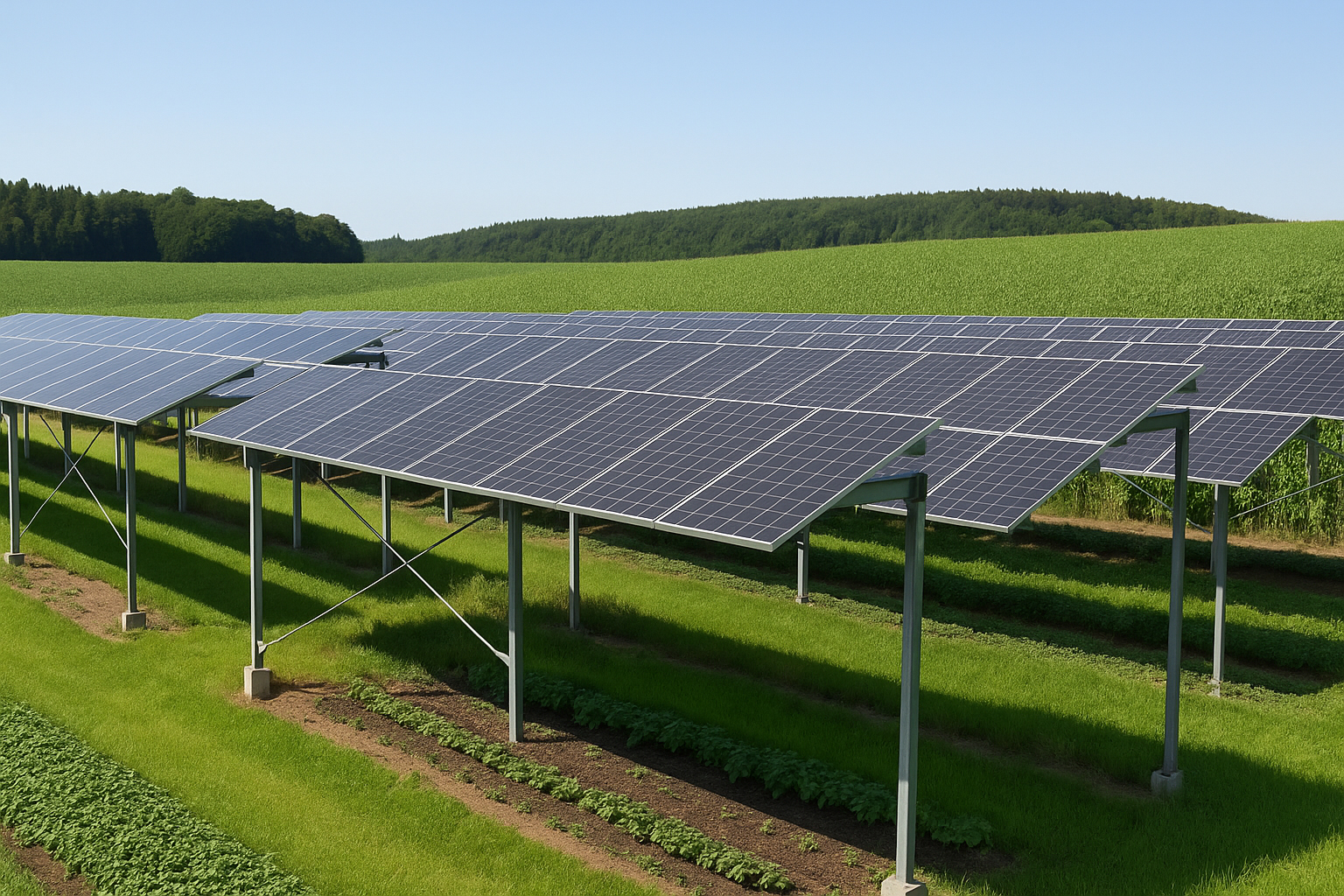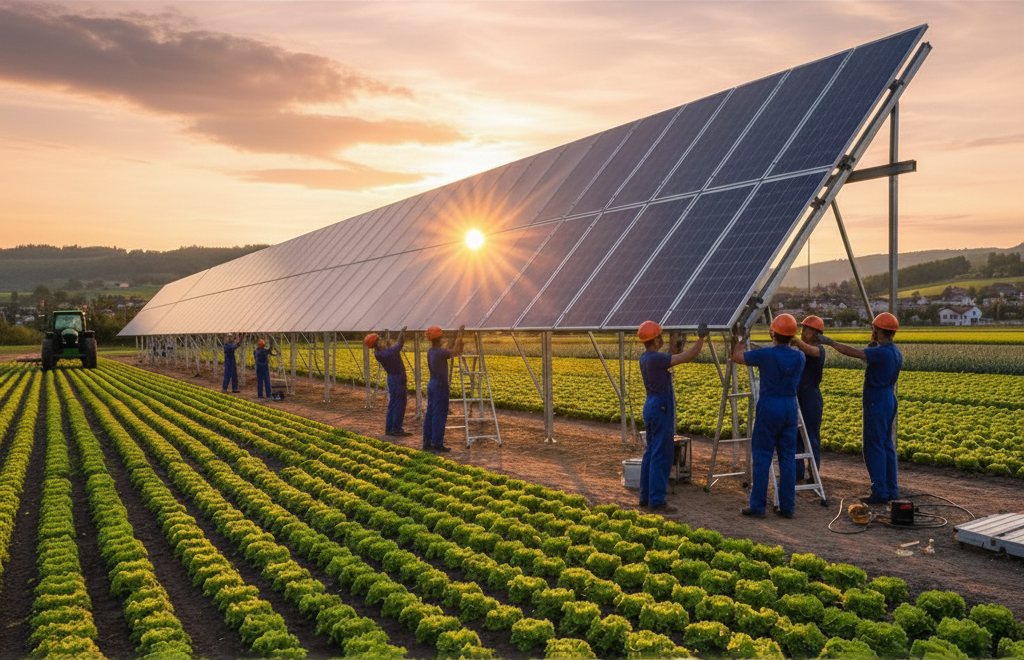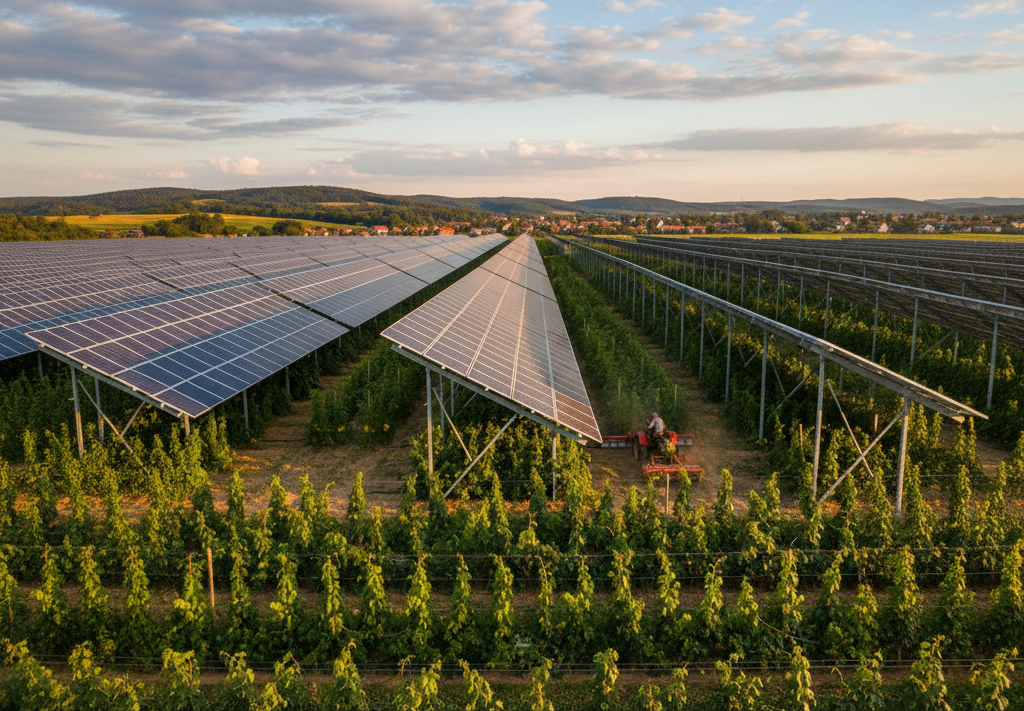Published on 16 September 2025
Agrivoltaic systems: what they are, how they work, and the opportunities they offer

What are agrivoltaic systems
An agrivoltaic system is a photovoltaic configuration that allows energy production without taking away land from crops. Unlike traditional ground-mounted systems, the modules are installed on raised structures, making it possible to continue agricultural or livestock activities beneath the photovoltaic surfaces.
This model was designed to combine environmental sustainability, energy profitability, and agricultural productivity. In many cases, the presence of panels also helps create more favorable microclimates, reducing water and heat stress and improving crop resilience.
Agrivoltaics vs. agrisolar: key differences
Although the two terms are often used interchangeably, they refer to different solutions:
Agrisolar: installation of modules on existing roofs (warehouses, greenhouses, barns, storage facilities).
Agrivoltaics: installation of raised modules directly on farmland, allowing cultivation or grazing at the same time.
Agrisolar is suitable for those with large roof surfaces, while agrivoltaics represent an opportunity to make use of farmland without compromising its productivity.
Vuoi vendere i tuoi pannelli usati?
Would you like to sell your used panels?Requirements and rules for agrivoltaics in Italy
In recent years, the Ministry of the Environment and the GSE have introduced specific criteria to distinguish agrivoltaics from traditional ground-mounted systems and to ensure their effective compatibility with agricultural activity. The main requirements include:
Raised structures and accessibility
The modules must be installed at a height that allows the passage of agricultural machinery and normal field operations. Their layout must also guarantee accessibility and functionality.
Minimum producibility
The systems must ensure a minimum energy yield, often set at around 60% compared to a conventional plant on the same site. This parameter guarantees that the system remains efficient from an energy standpoint.
Are you looking for used photovoltaic panels?
Go to KTS MarketplaceMonitoring and agronomic studies
One of the most delicate aspects of agrivoltaics is ensuring that agricultural production is not compromised by the presence of panels. For this reason, every project must include preliminary agronomic studies and a continuous monitoring system.
Initial study: an agronomist must certify that the photovoltaic system supports or at least does not reduce agricultural productivity. This may mean, for example, demonstrating that a crop benefits from the shading provided by the panels (as can be the case for certain horticultural or fruit varieties).
Ongoing monitoring: once the system is installed, parameters such as microclimate, soil quality, and agricultural yield must be measured. This helps verify whether the integration between crops and solar modules truly works.
Soil analysis: periodic sampling is carried out to assess key parameters (pH, organic matter, fertility), ensuring that the land maintains its productive characteristics.
Limits on agricultural yield: guidelines indicate that the presence of panels must not significantly reduce agricultural production. On the contrary, in many cases the goal is for productivity to remain unchanged or even improve thanks to a more favorable microclimate.
In essence, agrivoltaics is not just about “placing panels in the fields,” but about creating a system where energy and agriculture can coexist and reinforce each other. Agronomic studies and monitoring are not a bureaucratic detail, but the core that makes this technology credible and sustainable.

Approved components
To access incentives, systems must use new components certified according to industry standards. This applies to both modules and inverters, as well as other electrical devices.
Opportunities and limits of incentives
Agrivoltaics falls under several public support programs, including PNRR funds and specific regional calls. Generally, the model provides for a non-repayable grant combined with feed-in tariffs for the energy produced.
It is important to emphasize that these incentive schemes require the exclusive use of new and certified components. Modules or inverters that have already been used in other installations cannot be installed in projects benefiting from public funds. This requirement ensures high standards of safety, efficiency, and traceability.
Agrivoltaics without incentives: practical applications
Not all agrivoltaic projects aim to access incentives. In many small and medium-sized farms, it may be interesting to develop systems dedicated to specific uses, such as powering irrigation pumps, field refrigerators, lighting systems, or electric fences.
In these cases, the priority is not maximizing the financial return from incentives, but reducing investment costs and ensuring reliability. More flexible solutions can therefore be considered, provided that the components are tested, traceable, and compatible with farm needs. Quality remains the decisive factor: checks such as the flash test, I-V curve, and visual inspection of modules are essential to ensure real efficiency.
Crops and layout: a delicate balance
The success of an agrivoltaic project largely depends on the proper integration of the system with crops. Some types, such as forage, vegetables, and aromatic plants, adapt well to the partial shading of panels. Others, however, require full sun exposure and may suffer yield reductions.
The system layout is therefore a key factor. Structure height, module tilt, and row spacing must be designed to ensure the right balance between electricity production and agricultural activity.

Frequently asked questions about agrivoltaic systems
What is the difference between agrivoltaics and agrisolar?
Agrisolar refers to rooftop and building-mounted systems, while agrivoltaics involves installing raised modules on farmland, compatible with crops or grazing.
Can used panels be installed in incentivized agrivoltaic systems?
No. Projects that access public incentives require new and certified components.
How much must an agrivoltaic system produce?
The operating rules set a minimum producibility threshold, usually equal to 60% of that of a conventional system on the same site.
Which crops are most suitable?
Forage crops, some vegetables, and aromatic plants show greater adaptability. However, an agronomic study is always required on a case-by-case basis.
Agrivoltaics represents one of the most promising solutions for combining the energy transition with agricultural productivity. It is a young but rapidly growing sector, supported by public incentives and increasing interest from the farming world.
Whether it concerns large incentivized systems or smaller projects designed for specific uses, the principle remains the same: optimally integrating energy and agriculture. Careful planning, the choice of suitable components, and continuous monitoring are the elements that make the difference.